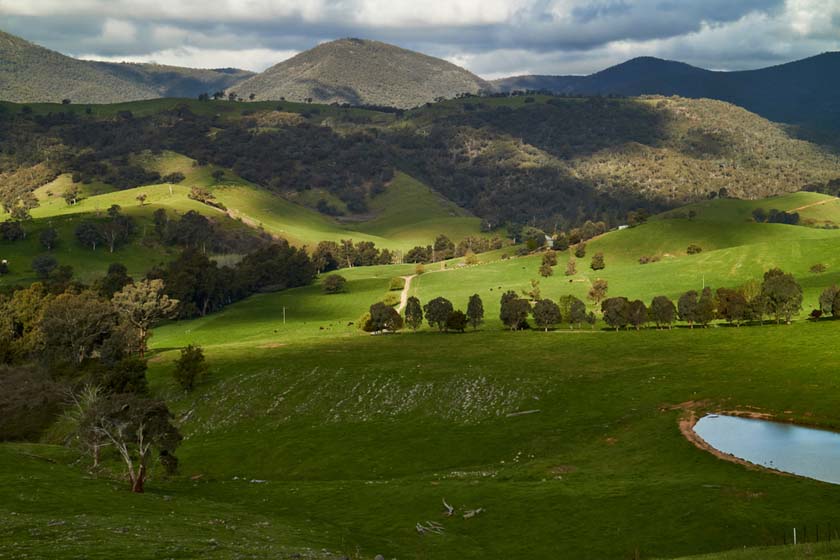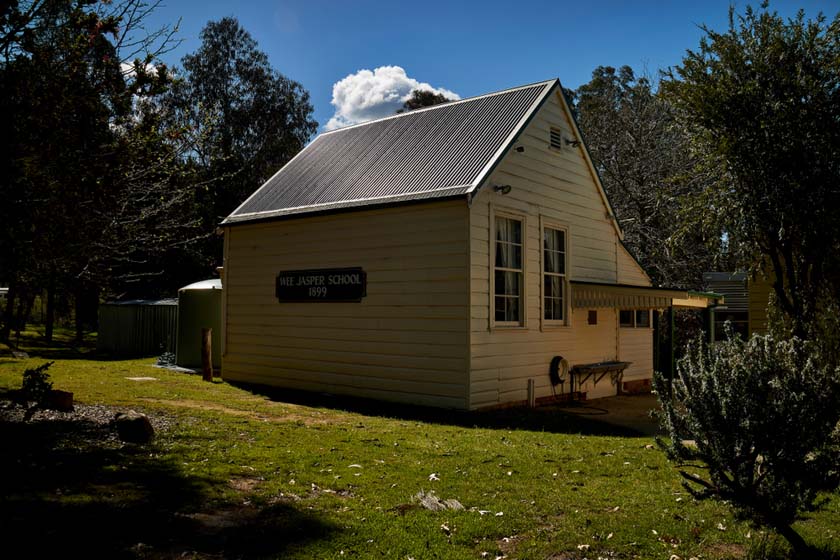Wee Jasper, NSW
The road between Yass and Wee Jasper was declared the shortest way to travel from Sydney to the Kiandra goldfields in the 1850’s, when thousands of fortune seeking Europeans and “Celestials” (Chinese) used what must have been a bush track, prior to the development of the current surveyed road.
On the 19th October 1824, Hamilton Hume and William Hovell passed through the Yass Plains on their expedition to Victoria. That afternoon, the Hume & Hovell party reached the Murrumbidgee River (the second largest river in Australia) only to find a deep, fast flowing, 40 metre wide river in flood. On the 22nd October 1824, when waters in the Murrumbidgee River had not diminished, a tarpaulin was wrapped around the body of a cart, hence converting it into a makeshift punt. Hume then, accompanied by one of his convicts, Boyd swam across the river with a rope and used the makeshift punt to transport equipment, provisions and non-swimmers to the other side.
As the Wee Jasper Road descends towards the Murrumbidgee River, panoramic views of the valley and the stored waters of Burrinjuck Dam unfold. Clear views of limestone rock formations and extensive folding, millions of years old can be seen in the cliffs arising from the river. Geologically described as an “Anticline” formed in the Devonian period the formation is estimated to be in the vicinity of 400,000,000 years old.
The Taemas Bridge crosses the Murrumbidgee River. The original bridge was washed away in May 1925 when logs and debris built up against the structure and floated the wrought iron girder deck off the cylinder piers. The present bridge was opened in 1930.
The most romantic origin of the name Wee Jasper comes from folklore and is attributed to an early resident, McBean, an old Scot, one of the early settlers . McBean, so the story goes, arrived home one day with “Wee” (Scottish for small), “Jasper” (Gems) in his pocket.
The Goodradgbee River, formerly called the “Little River” is an outstanding trout stream that meanders through the ranges from its source high in the Snowy Mountains.
Australia’s best known poet, Andrew Barton Paterson better know as “Banjo” called Wee Jasper his home during the early 1900’s. His property was “Coodravale Station” located on the Yass side of the Goodradigbee River.
Some of the charm of early Wee Jasper has been lost; however, a group of limestone buildings survive. On the right as you cross the bridge is the former Police Barracks, c1880 now the Stables Tavern & Restaurant. Further on the right is the school residence, formerly the Police Station then at the intersection is the local school opened in 1899.
There are numerous limestone caves in the Wee Jasper Valley, the best known being Carey’s Cave, which is open to the public for inspection. Visitors can also enjoy cabin accommodation, camping reserves, the Hume & Hovell Walking Track , fishing, fossicking and caving.
Nearest Airport: Canberra (120kms)
Where to stay?
About Wee Jasper
- Locality: Rural locality
- Wee Jasper Postcode: 2582
- State: New South Wales
- Region: Country NSW
- Latitude: -35.11577
- Longitude: 148.67312
- Elevation: 413m
- Population: 100
- Median Income: $30836
- Area (Sq/km): 422.503
- Timezone: Australia/Sydney
Accommodation In Wee Jasper
Discover some of the accommodation in and around Wee Jasper




